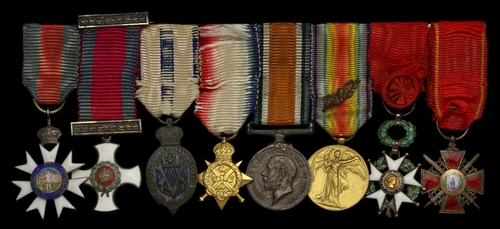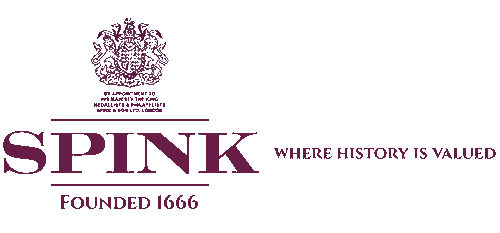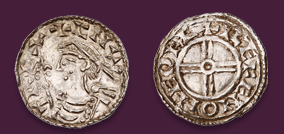
Auction: 25003 - Orders, Decorations and Medals
Lot: 317
The superb mounted C.M.G. 'Gallipoli' DSO and Rare 'Archangel Command' Albert Medal group of eight dress miniatures attributed to Captain G. P. Bevan, Royal Navy
The Most Distinguished Order of St Michael and George, Companion's (CMG) Badge, silver-gilt and enamel; Distinguished Service Order, G.V.R., silver-gilt and enamel, with integral top riband bar; Albert Medal, Second Class, Bronze and enamel, For Gallantry in Saving Life at Sea; 1914 Star; British War and Victory Medals, with M.I.D. oak leaves; France, Republic, Legion of Honour, Officer's breast Badge, enamel; Russia, Imperial, Order of St Anne, Third Class Badge, with swords, enamel, mounted as worn, slight enamel wear to first, overall good very fine (8)
C.M.G. London Gazette, 3 June 1918:
'In recognition of valuable services rendered during the War.'
D.S.O. London Gazette, 14 March 1916, the original citation states:
'Has done continuous patrol work with great zeal and energy, and carried out valuable feints at landings in the Gulf of Xeros on 6 and 7 Aug. during the landing at Suvla.'
A.M. London Gazette, 9 July 1918, the original citation states:
'For gallantry in saving life at sea. On the 8th November, 1916, a series of explosions and fires occurred at Bakaritsa, Port of Archangel, on merchant ships and on the wharves. The S.S. Baron Driesen had blown up at 1pm and part of the S.S. Earl of Forfar forty minutes later and fresh explosions were expected every instant. It was thought that all their crews had either escaped or been killed or rescued, but after dark cries of distress were heard from the Earl of Forfar. The ship was a mass of flame at the time, and burning embers from the fire which was raging on shore were continually showered over her. She had a cargo of explosives on board and was abreast of the main conflagration. The flames were blown towards her by the wind, and the remaining portion of the ship was expected to be blown up at any moment. Captain Bevan, however, on hearing the cries proceeded on board, accompanied by Lieutenant-Commander MacMahon, and, hearing moans from under the smouldering debris of the forecastle, cleared away the wreckage and extricated the mate, who had an arm and a leg and his collarbone broken, and passed him into a tug.
Captain Bevan displayed the utmost gallantry and disregard of his personal safety.'
France, Legion of Honour, London Gazette, 7 June 1918.
Russia, Order of St Anne, London Gazette, 1 March 1917.
M.I.D. London Gazette 14 March 1916.
George Parker Bevan was born at Staines on 23 June 1878, the son of James and Hannah Bevan. Entering the Royal Navy as a Naval Cadet in July 1894 he was appointed Midshipman in December. Bevan passed for Lieutenant in September 1899 as a gunnery specialist serving with HMS Repulse, before going ashore and undergoing a series of courses until March 1906 when he was posted to Sheerness Gunnery School, remaining there until August 1908.
Advanced Commander on 22 June 1911 whilst serving as a Staff Officer, Bevan was later appointed Naval Secretary to the Ordnance Board, Woolwich on 20 March 1913. He was still serving in this capacity when the Great War began, earning a letter of Appreciation from their Lordships for his invention of a quick firing gun.
Given command of the Armed Trawler Emir on 23 May 1915 Bevan was appointed to command a flotilla of approximately 50 trawlers and drifters fitting out for the Dardanelles. He did good service off the Peninsula and was involved in the evacuation of Gallipoli, being awarded the D.S.O. for his work. Advanced Captain on 30 June 1916 he was further appointed Principal Transport and Movement Officer to the Staff of the Governor-General of the Province of Archangel, North Russia on 7 April 1916.
This role placed him in charge of the landing and transport of munitions to the Russian Front. As a result, he was in Bakaritsa, the Port of Archangel when the Merchant Ship SS Baron Driesen blew up at 01:00 on 8 November 1916.
The immediate priority for Bevan was to prevent the disaster spreading and desperate attempts were made to move other ships away however these failed and at 01:40 the SS Earl of Forfar exploded. The ship's Master Captain James Hurry had been away from his ship at the time and, unable to return to it, organised relief efforts for other vessels. While doing so he heard cries for help from the burning Earl of Forfar, leading volunteers aboard he was able to rescue several before the deck was totally destroyed.
Despite this when cries were heard coming from a floating crane between the ship and the quay, Bevan and Lieutenant Commander McMahon moved to cross the ship and try to help those trapped. Whilst doing so they encountered another wounded man who had managed to survive the conflagration and was trapped, injured in the forecastle. As they did so, many of the small arms on the deck were still detonating, despite this they were able to find the ships mate alive and extract him before proceeding to the crane. In all six Albert Medals were awarded for the gallantry, venturing aboard a burning vessel and saving several lives.
Recalled to London in February 1918 Bevan was appointed Naval Assistant Director of Transports with command of HMS Triad in November 1919. Travelling to the Persian Gulf he took up the role of Senior Naval Officer, Persian Gulf. Bevan had not been in good health for some time and prior to sailing his doctor had advised that he take some leave. Arriving at Aden family tradition has it that, Bevan went ashore to call upon the Governor and as the two men shook hands he removed his hat, collapsed and died. It is certainly true that he died of brain cancer upon his arrival at Aden on 14 January 1920 and was buried in Maala Cemetery, Yemen; sold together with copied research.
Subject to 20% VAT on Buyer’s Premium. For more information please view Terms and Conditions for Buyers.
Estimate
£300 to £500
Starting price
£240




